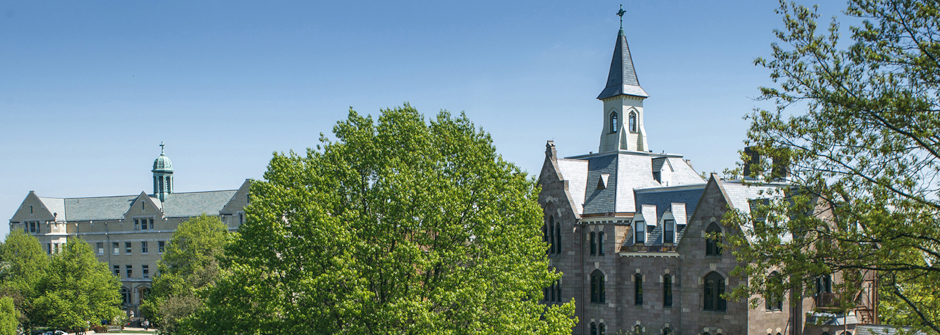
Recycling
Recycling is mandatory in New Jersey and at Seton Hall University. As part of South Orange, the university must comply with all local ordinances and policies on recycling. The current goal is to recycle 25% of trash as recycled material.
The following items are currently recycled:
Glass
Aluminum
Computer paper, white paper, shredded paper
Cardboard
Leaves, branches
Waste oil
Fluorescent, LED, HID light bulbs
Batteries
Light ballast
Electronics
Scrap Metal
Plastic
Responsibilities:
- Recycling starts with every individual on campus. Each person will separate trash and recycling at the source.
- Recycling activities at SHU currently do not generate any money, but they do avoid
costs of removing trash from campus. The current arrangements allow for recycled products
to be picked up at no cost to the university, but no profits are realized either.
Recycling of any item makes sense. It is conserving natural resources; reducing litter,
reducing disposal costs; and complying with the law. Recycling reduces pollution and
saves money.
- Glass produced through recycling reduces air pollution by 20% and water pollution by 50%.
- Manufacturing disposable bottles requires three times as much energy as manufacturing reusable or recyclable containers.
- Recycling aluminum saves up to 95 of the energy required to produce aluminum from ore.
- The energy saved by recycling one aluminum can operate a television for three hours.
- Aluminum produced through recycling reduces air pollution by 97%.
- Discarded aluminum cans litter the earth for up to 500 years.
- Discarded plastic litter the earth forever.
- Each building has separate containers for trash, paper and combined glass, aluminum and plastic.
- The co-mingled recyclable materials (glass, aluminum, and plastic) are collected in the residence halls, office buildings and classroom building. It is collected on a daily basis by ATALIAN in clear bags and brought outside the building.
- Facilities Engineering (DFE) collects the bags on a daily basis and transports them to one of the established recycling containers.
- Paper is sorted at the source and collected according to type. The large users of computer paper will save the paper in boxes and call the pick up firm when their storage area is full. Almost any type of office paper can be saved for recycling. Each office should have two trash cans; one for white, recyclable paper and the other for trash. These will be emptied daily by ATALIAN and stacked in bags in separate piles. DFE will collect these bags and transport them to the large bin located behind the Recreation Center. When this container is full, an outside firm (South Orange Disposal) will remove the contents.
- There are several large volume paper shredders on campus. The shredded material is bagged and stored in the area of the shredder. When the area is full, the owner calls ATALIAN to remove the bags.
- Cardboard is saved by the major sources, the Bookstore and Gourmet Dinning. The user will flatten the boxes and tie them in bundles. DFE will then pick up these bundles and transport them to the cardboard compactor behind the University Center.
- Facilities Engineering will recycle all leaves, branches and grass clippings. They will be deposited into an open vegetation box near the rear of the Recreation Center.
- Facilities Engineering will recycle waste oil. The oil will be stored in a 55 gal drum in the grounds garage. When full, the drum will be hauled away by an outside firm and a new empty drum will be placed in the garage.
- Facilities Engineering will recycle all scrap metal by placing it in an open box behind the Recreation Center.
